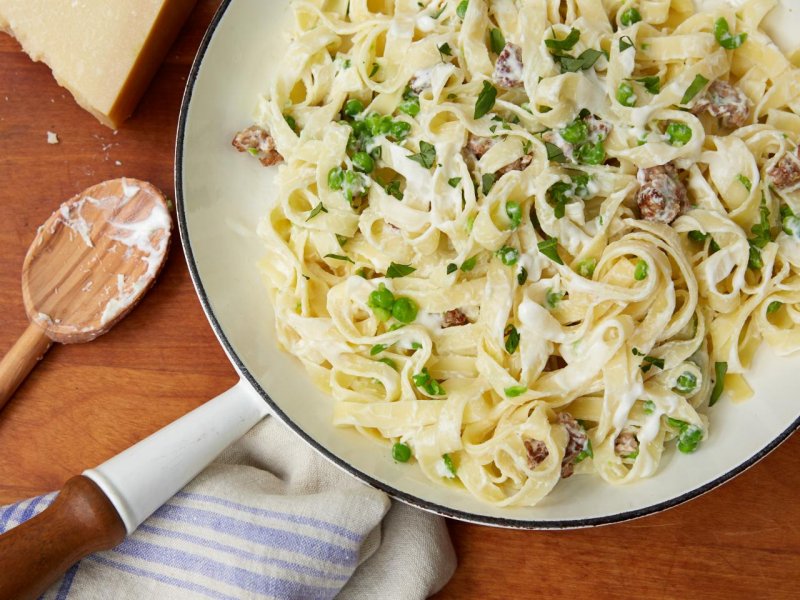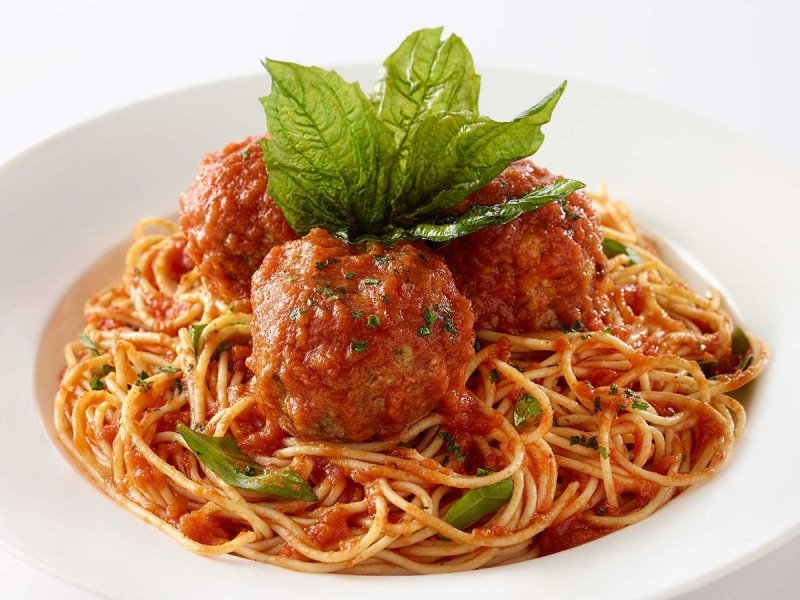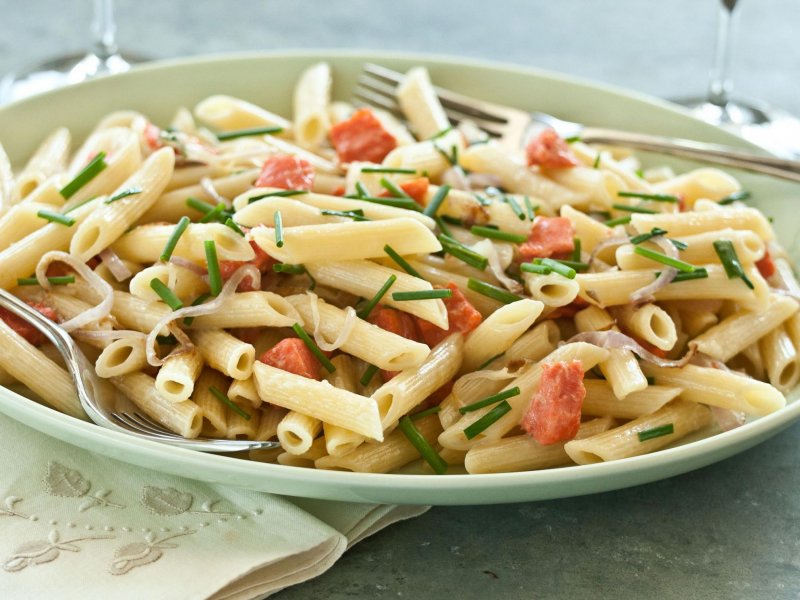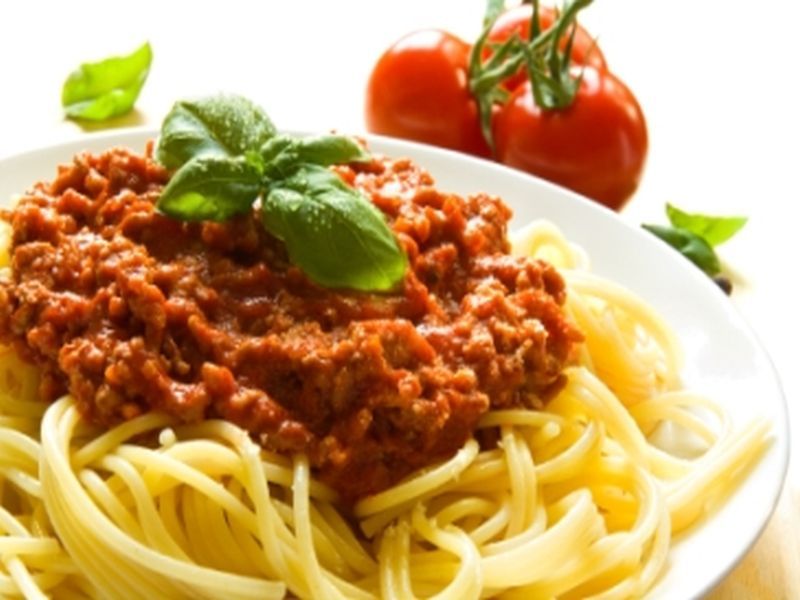Exploring the Different Types of Sauces for Pasta
Pasta is a versatile and beloved dish that can be enjoyed in countless ways. While the type and shape of pasta play a significant role in determining the taste and texture of a dish, the sauce is equally important in adding depth, flavor, and richness to the overall culinary experience.
In this summary, we will delve into the world of pasta sauces, exploring some of the most popular and delicious options available. From classic staples to unique and innovative creations, there is a sauce to suit every taste and preference.
1. Marinara Sauce:
Marinara sauce is a fundamental Italian tomato-based sauce that forms the base for many pasta dishes. Made from tomatoes, garlic, onions, herbs (such as basil and oregano), and olive oil, marinara sauce is known for its bright and tangy flavor. It is often paired with simple pasta shapes like spaghetti or penne and can be enhanced with additional ingredients such as capers, olives, or red pepper flakes for added complexity.
2. Alfredo Sauce:
Originating in Rome, Alfredo sauce is a rich and creamy sauce made primarily from butter, heavy cream, and Parmesan cheese. It has a luxurious, velvety texture and a delicate, cheesy flavor. Alfredo sauce is often served with fettuccine, a flat, ribbon-like pasta, but it can be paired with other pasta shapes as well. Variations include adding garlic, nutmeg, or even incorporating protein such as chicken or shrimp for a heartier meal.
3. Pesto Sauce:
Pesto sauce is a vibrant, green sauce hailing from the Liguria region of Italy. Traditionally made with basil, pine nuts, garlic, Parmesan cheese, and olive oil, pesto sauce offers a fresh and herbaceous flavor. The sauce is typically tossed with pasta shapes like spaghetti or fusilli, allowing the pasta to be coated evenly with the sauce. Pesto sauce can also be adapted by using alternative ingredients such as arugula, sun-dried tomatoes, or even spinach for a twist on the classic recipe.
4. Carbonara Sauce:
Carbonara sauce is a decadent and indulgent sauce originating from the Lazio region of Italy. Made with pancetta or guanciale (cured pork), eggs, cheese (usually Pecorino Romano), and black pepper, carbonara sauce has a rich and creamy consistency. It is typically paired with spaghetti or rigatoni pasta, creating a velvety coating that clings to each strand. While variations exist, the traditional recipe does not include cream or onions.

5. Bolognese Sauce:
Bolognese sauce, also known as ragù alla Bolognese, is a hearty meat-based sauce originating from the city of Bologna in Italy. This slow-cooked sauce is traditionally made with a combination of ground beef and pork, onions, carrots, celery, tomatoes, wine, and herbs. The lengthy cooking process allows the flavors to meld, resulting in a rich and deeply flavored sauce. Bolognese sauce is commonly paired with pasta shapes like tagliatelle, pappardelle, or lasagna, as their ribbons or layers provide the perfect vehicle to embrace the sauce.
6. Arrabbiata Sauce:
Arrabbiata sauce is a spicy tomato-based sauce that adds a fiery kick to your pasta dish. Made with tomatoes, garlic, red chili peppers, olive oil, and sometimes onions, this sauce offers a combination of heat and flavor. Arrabbiata sauce is an excellent choice for those who enjoy bold and zesty flavors in their pasta dishes. It pairs well with penne or rigatoni pasta, as their ridges help to hold the sauce and provide a satisfying bite.
7. Aglio e Olio Sauce:
Aglio e Olio, or “garlic and oil” sauce, is a simple yet flavorful pasta sauce that originated in Southern Italy. As the name suggests, the sauce is primarily made with garlic, olive oil, red pepper flakes, and parsley. The ingredients are sautéed in the oil, creating a fragrant and aromatic base. Aglio e Olio sauce is often paired with spaghetti or linguine, allowing the pasta to absorb the flavors of the sauce. This sauce is a go-to option for those seeking a quick and easy yet delicious pasta dish.
8. Vodka Sauce:
Vodka sauce is a creamy tomato-based sauce that originated in Italy but gained significant popularity in the United States. It typically contains tomatoes, cream, onions, garlic, and vodka. The vodka helps to enhance the flavors of the sauce while adding a unique depth. The creamy texture of the sauce pairs well with penne or farfalle pasta, capturing the sauce in their nooks and crannies.
9. Puttanesca Sauce:
Puttanesca sauce is a pungent and flavorful sauce that is said to have originated in Naples, Italy. This sauce is characterized by its intense flavor profile, which includes ingredients like tomatoes, olives, capers, garlic, chili peppers, and anchovies. The briny and bold combination of flavors creates a sauce that is both savory and tangy. Puttanesca sauce complements pasta shapes like spaghetti or linguine, allowing the aromatics to cling to the strands.
10. Amatriciana Sauce:
Amatriciana sauce is a classic pasta sauce hailing from the town of Amatrice in Italy. The sauce is typically made with guanciale (cured pork jowl), tomatoes, onions, pecorino cheese, and chili flakes. The guanciale adds a distinct and robust flavor to the sauce, while the chili flakes provide a hint of heat. Amatriciana sauce pairs well with pasta shapes like bucatini or rigatoni, as their hollow centers capture the sauce, resulting in a flavorful bite.

In conclusion, the world of pasta sauces is vast, diverse, and exceptionally flavorful. From the classic and beloved marinara to the indulgent and rich Alfredo sauce, there is something to suit every palate and occasion. Whether you prefer a simple and rustic sauce or a complex and spicy creation, the variety of pasta sauces allows for endless possibilities and culinary adventures. So, grab your favorite pasta shape, experiment with different sauces, and embark on a delectable journey of taste and texture.Exploring the Different Types of Sauces for Pasta
Introduction:
Pasta is a widely popular dish that has captured the hearts and palates of people all over the world. Whether it’s a comforting bowl of spaghetti or an elegant plate of fettuccine, the sauce plays a vital role in enhancing the flavors and bringing the dish together. In this article, we will explore ten distinct types of pasta sauces, delving into their origins, unique characteristics, and potential business opportunities they present.
1. Marinara Sauce:
Marinara sauce is a staple in Italian cuisine, known for its simplicity and versatility. This tomato-based sauce is made with fresh tomatoes, garlic, onions, herbs, and olive oil. Marinara sauce pairs well with a variety of pasta shapes and can be customized with additional ingredients like capers or olives. For businesses, offering homemade marinara sauce can be a selling point, as customers appreciate the freshness and authenticity of the flavors.
2. Alfredo Sauce:
Originating from Rome, Alfredo sauce is a creamy and indulgent option loved by pasta enthusiasts. Made with butter, heavy cream, and Parmesan cheese, this sauce creates a smooth and luscious texture. Businesses can explore using high-quality ingredients or experimenting with variations such as adding garlic or incorporating different types of cheeses to create a unique selling point.
3. Pesto Sauce:
Pesto sauce brings a burst of freshness to pasta dishes, with its vibrant green color and herbaceous flavors. Traditionally made with basil, pine nuts, garlic, Parmesan cheese, and olive oil, businesses can consider sourcing high-quality ingredients to maintain the authentic taste. Pesto variations using different herbs like arugula or alternative ingredients like sun-dried tomatoes can attract customers looking for unique flavors.
4. Carbonara Sauce:
Carbonara sauce is a decadent option that originated in Italy. Combining pancetta or guanciale, eggs, cheese, and black pepper, this sauce creates a rich and velvety texture. Businesses can consider incorporating high-quality cured meats and Pecorino Romano cheese for an authentic and robust flavor. Offering vegetarian alternatives using ingredients like mushrooms or tofu can cater to a broader customer base.
5. Bolognese Sauce:

Bolognese sauce is a slow-cooked meat-based sauce that hails from Bologna, Italy. This hearty sauce typically consists of ground beef, pork, onions, carrots, celery, tomatoes, wine, and herbs. To replicate the authentic flavors, businesses can explore using high-quality meats, allowing the sauce to simmer for hours to develop its depth and richness. Offering gluten-free or plant-based alternatives can also attract customers with dietary restrictions or preferences.
6. Arrabbiata Sauce:
Arrabbiata sauce adds a spicy kick to pasta dishes with its tomato-based recipe and inclusion of red chili peppers. This sauce combines tomatoes, garlic, red chili peppers, olive oil, and sometimes onions to create a bold and fiery flavor profile. Businesses can offer varying levels of spiciness to cater to different palates and incorporate artisanal ingredients, such as locally sourced chili peppers, to add an extra layer of uniqueness.
7. Aglio e Olio Sauce:
Aglio e Olio, meaning garlic and oil, is a simple yet flavorful sauce that originated in southern Italy. Made with garlic, olive oil, red pepper flakes, and parsley, this sauce highlights the beauty of a few quality ingredients. For businesses, highlighting the use of fresh and locally sourced ingredients can attract customers looking for authentic and wholesome dishes. Adding variations with ingredients like lemon zest or toasted breadcrumbs can provide additional flavor profiles.
8. Vodka Sauce:
Vodka sauce, popularized in the United States, is a creamy tomato-based sauce with a unique twist. Combining tomatoes, cream, onions, garlic, and vodka, this sauce offers a balance of flavors and a velvety texture. Businesses can experiment with different types of vodka or infuse their own vodka to create a signature sauce. Providing gluten-free or dairy-free options can also broaden the customer base.
9. Puttanesca Sauce:
Puttanesca sauce is a robust and flavorful option originating from Naples, Italy. This sauce combines tomatoes, olives, capers, garlic, chili peppers, and anchovies for a tangy and savory taste. For businesses, showcasing the quality and origin of the ingredients can highlight the authenticity of the sauce. Offering vegetarian or vegan versions without anchovies while maintaining the intensity of flavors can further expand the customer base.
10. Amatriciana Sauce:
Amatriciana sauce, born in Amatrice, Italy, is a hearty and flavorful sauce made with guanciale, tomatoes, onions, pecorino cheese, and chili flakes. The guanciale imparts a distinct flavor, while the chili flakes add a touch of heat. Businesses can source genuine guanciale and pecorino cheese to maintain the traditional taste. Promoting this sauce as a signature dish or exploring variations with seasonal ingredients can attract customers seeking unique and traditional flavors.
Conclusion:

Italy’s rich culinary history has gifted the world with a wide variety of pasta sauces, each offering unique flavors and characteristics. Businesses can capitalize on this diversity by offering homemade, authentic sauces made with high-quality ingredients. By highlighting the origins, quality of ingredients, and providing variations to cater to different dietary preferences, businesses can attract customers seeking both classic dishes and innovative creations. The pasta sauce market offers endless opportunities for businesses to showcase their creativity and passion for culinary excellence.









